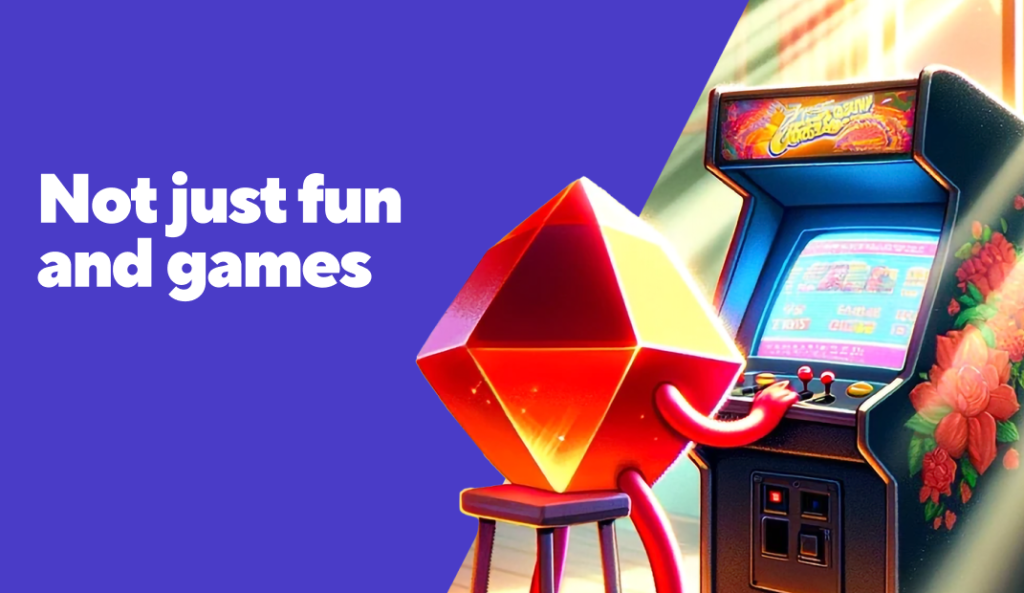A lot has happened in the mobile app marketing landscape since Apple and Google began making significant changes to their privacy policies. Mobile users have become more conscious of the value of their personal data, and express an increasing desire for control and transparency regarding whether and how it’s shared with third parties.
Of course, an increase in consumer privacy represents a positive step forward overall, but these changes have left mobile marketers worrying about their survival in an unfamiliar and extremely competitive environment. Arguably, things have become even more challenging for mobile game marketers specifically.
If you’re a mobile game developer, acquiring new users has traditionally been your lifeblood, your essence of survival. User acquisition (UA) is simply how you grow your mobile game; however, it’s now harder than ever to target higher-quality users, especially compared to just two or three years ago. Between then and now, the number of new mobile game launches decreased considerably; studios and publishers experienced a significant drop in revenue-based metrics such as LTV, ROAS, ARPU, and ARPDAU, and UA costs increased drastically.It wasn’t too long ago that mobile studios could create smash-hit commercial successes with a single UA manager and a mobile measurement partner (MMP), and become critical players in the games industry. Studios could also partner up with major publishers to conduct marketability tests and hope to achieve an extremely low CPI (cost per install) for their games – but those days are gone.
But enough with the negativity. As a company that helps game developers maximize revenue from their titles, we know the road doesn’t have to be full of darkness and danger. Finding the right user acquisition strategy for your game may seem daunting at first glance, but it just became harder, not impossible. This page will cover the basics of user acquisition, explain how mobile game user acquisition differs, explore the evolution of UA post-IDFA and other privacy changes, and help guide you toward creating a user acquisition strategy that will work for your game.
What is user acquisition?
User acquisition is a term often used by mobile marketers that refers to attracting users who (ideally) stick around and generate income for an app or game. It’s more of an umbrella term, as there are various marketing activities (be they organic or paid) you can employ to gain users.
Your goal is to attract new users first, convince them to download your app second, and ensure they interact with it and eventually generate revenue through ad views or in-app purchases. Mobile games make up pretty much half the App Store and Google Play. Plus, mobile games shoulder most of the revenue publishers make.

What is User Acquisition in mobile gaming?
When talking about mobile gaming, user acquisition specifically refers to the process of attracting new users and getting them to download and play your game. Mobile game UA can be done through paid advertising or organically, the benefits of which can vary depending on factors such as the age of the game, category of the game, and so on.
There are a few best practices that can help you get the most out of your UA efforts. One of, if not the most important component is to learn about your users and optimize your UA through data. This allows you to understand which users have the highest value and how you can increase your ROI (return on investment) as well as other KPIs.
Some other important elements include:
- Choosing the right UA channels, i.e. those with a similar user base to the target audience you are aiming for.
- Considering your KPIs concerning UA channels, the genre of your game, and the goal you aim for (such as installs, revenue, etc.)
- High-quality and engaging creative – we recommend testing different angles and variations for different audiences.
Now that the basics of user acquisition are covered, it’s time to dig deeper and better understand the current UA climate.
Want us to manage your game?
Let us manage your game to greatness for share of uplift, with no upfront cost. Talk to us today if that sounds like a good fit for you
The current state of Mobile Game User Acquisition in 2023
Some major mobile game publishers used to run about 500 CPI tests a month, some more and some less. The methodology was quite simple: A/B test your ad creatives on Facebook (Meta) with a low budget for each and see if one lands you a low CPI. It was a near-guaranteed success just two or three years ago. This also meant the mobile game market would see numerous games on soft or full launches.
However, this strategy is no longer available. Your game’s marketability is much harder to establish in the first place, and marketability alone is no longer the sole deciding factor regarding financial success. According to mobile game UA experts such as Kwalee’s John Wright, 40-50 IPM (installs per mille) used to ensure profits and top chart positions across global markets, but nowadays, there’s no guarantee. The market is less forgiving, especially for smaller studios who want to find their place in this competitive space.
What can you do if achieving low CPIs is no longer a safe bet? Well, successful mobile game developers are now opting to fully develop more of their games and aiming for longer shelf lives and higher LTV players built around engaging core game loops. Marketability tests have become more complex, comprehensive, and data-driven.
Of course, all this means your user acquisition costs will increase significantly. Some mobile game marketers report that in the post-IDFA mobile world, their user acquisition and marketability test costs are now 20-30 times higher, and they now employ broader testing strategies to find success in the market, but nothing is guaranteed.
Facebook/Meta is becoming
the more expensive choice
Apple’s changes to its identifier for advertisers (IDFA) immediately transformed the way mobile advertising ecosystems worked. Mobile gaming found an excellent testing ground in Meta. Costs were manageable; you didn’t need a proper MVP (minimum viable product) for testing CPI and player retention. Nowadays, mobile marketers are abandoning Meta’s grounds for SDK networks for early-stage game testing.
The arrival of SKAN (StoreKit Ad Network) made the testing process even more complex. While SKAN vs. non-SKAN testing has already become an accepted norm, user acquisition experts also welcome testing SDK networks at comparatively early stages compared to previous years.
At this point, a friendly reminder is in place. User acquisition for mobile games is more challenging than ever, and there’s no one-size-fits-all solution. One thing is for sure, though: You must become a SKAN expert if you want to keep your expert status in the acquisition space. The very same applies to Privacy Sandbox for Android as well.
Diversify your User
Acquisition Portfolio
The more competitive the scene is, the costlier your user acquisition efforts will become. There’s no sure start for testing your game’s early user acquisition strategy anymore, and that’s why it’s become crucial to diversify your UA portfolio.
Include new platforms in your UA strategy, conduct new tests, and tailor your efforts for your game. Follow the trends closely, and watch what your competitors are doing and where they’re finding new success. For instance, TikTok has become a powerhouse in UA for mobile games. The social media company claims 75% of gamers discovered new gaming content on TikTok and downloaded the game after seeing gaming content on the platform. Per the company’s own words, user acquisition via TikTok Games can convert users into paying customers at 36%, a great rate. The platform also claims that authentic ad creative and an optimized bidding strategy geared towards mobile app installs and in-app events can lead to increased ROAS and lower CPI by up to 90%.
You can further diversify your UA efforts by employing a tailored campaign on Reddit. Many casual mobile game publishers are heavily investing and testing ad creatives on this platform, with King seemingly taking the most aggressive approach.
Rarely does an organic user acquisition campaign work for a mobile game —aside from app store optimization (ASO), we’ll get there later in this article—but some examples prove otherwise. However, said examples usually involve an already existing powerful social channel or just riding a viral wave, and these aren’t really sustainable strategies for acquiring new users regularly.
In a nutshell, don’t limit your strategy to what used to work before. Test new platforms, seek new partners to drive success for your mobile game, try emerging platforms, including DSPs. UA diversification may increase your initial costs, but you will reap the benefits in the long run.
It is becoming harder to break out
Unsurprisingly, existing powerhouses in mobile game publishing keep their places in the top charts, whether in download numbers, player engagement levels, or generated revenue. Aside from a few exceptions, new faces aren’t typically seen in the top charts, meaning successful breakouts are now exceedingly rare.In fact, our most recent white paper found that 83% of mobile games die within 3 years. Larger publishers dominate the mobile gaming market, and they are shifting the focus to cooking games with meaningful meta layers (such as engaging storylines, side adventures, and mini-games adopted from successful hyper-casuals). Their user acquisition strategy is also shifted towards higher LTV players.
These challenges transformed user acquisition into a more complex, and therefore more expensive, marketing strategy. Mobile publishers are testing fewer games now but putting way more effort into user acquisition by employing expert teams and conducting never-ending UA tests across all suitable channels.
Having to employ a more refined approach means all your operating costs will also increase since you must invest in an experienced team in this field. Increased marketing costs reflect on your other operations as well. Adding to all this, we now see fewer investments made in the video games industry, both in the total number of investments made and the amount per investment.
It’s exceedingly challenging for smaller players, but where there’s challenge there’s also opportunity. Assembling the right tools and partnerships for your game can change everything for the better. The history of mobile games is full of exceptional success stories.
How to create a winning strategy for user acquisition in mobile gaming
Saying the mobile games market has changed over the years would be an understatement. For a while, mobile gamers were just fine with bite-sized hyper-casuals and simple casuals, but nowadays, users demand more complex gameplay that involves several meta layers. Not only that, said meta layers must add value to the whole experience; adding them for the sake of having them only works in the short run and hurts your game’s shelf life.
Yesterday’s good revenue metrics could very well mean an uncooked product not ready for a soft launch. You can achieve what used to be great IPM, CPI, and CPM rates, and your game may still fall short. This isn’t only because of IDFA changes, but also because your everyday mobile gamer is also evolving. Here are some expert tips on creating a winning user acquisition strategy for your game.
Identify your
target audience
Stating the obvious first. Understand who would be interested in your game and define your target audience. A good starting point is to look at previous campaigns and see what segments of users you have traditionally targeted. If there aren’t any previous campaigns, then start broad and narrow it down.
Luckily, these territories are no longer uncharted. Major growth acceleration and market intelligence platforms provide valuable and actionable player data. Plus, quite a number of them created player segments and archetypes based on user demographics. If you don’t have a large budget and can’t afford their premium services, nearly all of them regularly share quarterly market reports for free. If you’re a new player in the mobile games market, you can even ask for a free demo and use the premium product for a limited period to boost your start.
Old ways can still work, too. Often enough, the best practice may be to test audience segments on a small budget before launching the main campaign and then scale once you are satisfied with the results on a micro-level.
One last tip before we jump to the next bit: Look not only at what worked before but also at what kind of targeting strategy is trending among your game’s genre and your competitors. For instance, puzzle games used to be heavily dominated by older female players; however, the number of male puzzle players is rapidly rising, and younger players are also showing increasing interest in this category.
Good gameplay mechanics
and engaging meta layers
Do you know what significantly lowers your user acquisition costs? A fun game! If your mobile game has entertaining mechanics and meta layers that give players reasons to return, making ad creatives will be much easier. Try to find out what gameplay mechanic or which meta layer your players resonate with the most, and focus on making ad creatives around these ideas.
With more complex gameplay experiences now resonating strongly with users, the hyper-casual juggernaut has stalled, but the opportunity for midcore and core mobile games as well as hybrid-casual titles is clear. Meta layers come in many ways. Meta layers are in-game contents that add depth and support the core gameplay. They provide additional monetization opportunities, a chance to acquire more users, and improve engagement alongside retention. Some of the more popular metas are narrative, social, and decoration elements, but there are others that can work for your acquisition efforts. Many successful user acquisition campaigns make ad creatives built around the game’s meta layers to target broader audiences. They hit these users with gameplay elements they saw in the creative, and once they’re hooked, the core gameplay is introduced. Plus, meta layers can also be monetized heavily, meaning you’ll be opening your game for greater revenue-making opportunities.
Choose the right
marketing channels
Getting the right mix of channels and campaigns is where you can really maximize your UA efforts. Paid channels such as Facebook Ads, Google’s UAC, ironSource, and many more enable you to advertise and gather installs. Each channel has its own specifics, and the best way to start, similarly to the previous section, is by testing on smaller budgets.
Other than paid UA, there are also organic options such as app store optimization (ASO). ASO works similarly to search engine optimization (SEO) for websites but is instead used to increase ranking on app stores. By analyzing and optimizing keywords, you can significantly improve a mobile game’s chance of being discovered by users in the Google Play/App Store.
Some of the best practices include:
- Using low competing keywords
- Describing and specifying game titles to best explain what users can expect from the app
- Choosing the appropriate category
- Reviews and high-quality screenshots
A mobile game’s user acquisition depends on getting the right data in the right way at the right time, and sadly, the acquisition part is getting less measurable. To get the best out of your marketing efforts and acquire new users, find a partner who can provide the insights you need for growth.
Know KPIs for your game
Tracking critical KPIs, especially during the initial launch of a game, will enable you to make more strategic decisions. The most commonly tracked KPIs are ROAS (Return on Advertising Spend), CPI (Cost per Install), LTV (Lifetime Value), ARPPU (Average Revenue Per Paying User), and ARPDAU (Average Revenue Per Daily Active User).
Focus on high-quality creative
Video ads are a great way to portray in-game mechanics and core gameplay to potential players and are often key in influencing the decision to download a game. Be sure to use ad creatives that provide an accurate representation of the game. Using false/misleading creative leads to high player drop-offs and uninstalls as the player realizes the game is not what was promised/portrayed.
Playable ads are proven to bring higher-quality players to your game and can easily showcase core gameplay in an engaging way. Unfortunately, getting a quality playable ad can be pricey, especially if it is your first attempt, as it can mean paying a lot of money for creative assets that may not perform.
Should you use fake ads?
The mobile game market is not a highly regulated space. Many publishers use ad intelligence tools to determine which creatives have been the most successful in the last few months. Then, they simply copy these ads, optimize the creative for their game, and their user acquisition plans just work.
The problem here is that these publishers run similar ads despite actual gameplay having no connection to what is advertised whatsoever, hence the name “fake ads.” By rights, this user acquisition strategy shouldn’t work, but major players in the market run fake ads aggressively, and it’s been working for them for years.
Should you use them? Probably not. Running fake ads can help your acquisition plans and boost your player-centric metrics initially, but your retention rates will likely dip, and you may end up hurting your LTV as well. At the end of the day, you put your reputation on the line; assess the risks and see if it’s worth it or not. We would always recommend staying away from this technique and don’t implement them for our partners.
Analyze and optimize your UA efforts
Once live, the effectiveness of your UA campaigns needs to be consistently analyzed and then optimized based on your findings. For example, If you see a campaign has a declining trend, consider changing the creative or targeting strategy to maximize results and minimize losses. In short, you need to frequently monitor your KPIs closely in order to determine the next steps for each campaign.
Got new, active or legacy games you feel are underperforming?
Let us manage your game to greatness for share of uplift, with no upfront cost. Talk to us today if that sounds like a good fit for you
How to increase user acquisition for your mobile game
The gaming industry is dynamic and competitive. Aside from some of the core principles discussed earlier, there are other, less conventional ways to increase your user acquisition efforts.
These include:
- Keeping track of updates, trends, and announcements.
- Monitoring competitors.
- Boosting ASO discoverability by using relevant keywords and fully utilizing text elements of your store – app name, short & long descriptions
- Show interest in player feedback by responding to reviews.
How SuperScale can help increase your user acquisition to levels rarely seen in a post-IDFA world
At SuperScale, our approach to UA is far different from that of a mobile marketing agency. We create the UA channel diversification strategy best suited to your game based on current industry benchmarks. Integration with our intuitive SuperInsights dashboards is the key to success.
Through SuperInsights, we can determine the ‘actual’ best-performing creatives/campaigns to an unmatched degree of accuracy post-IDFA. This is where mobile marketing agencies fail. They either don’t have the correct data available or are working with an incomplete data set that’s unable to determine the ‘actual’ best course of action – something which has become more prevalent in a post-IDFA world.
We also have a completely unique business model whereby we take your ‘new’, ‘active’ and ‘legacy’ games and grow them on an upside-only basis, meaning there is no risk to you or your game. You also keep the IP and remain in control. And, we don’t just stop at UA and analytics, we include LiveOps and monetization to make sure we do whatever it takes to grow your revenue.
To find out more, click here or get in touch for a 15-minute introductory call by clicking here.















